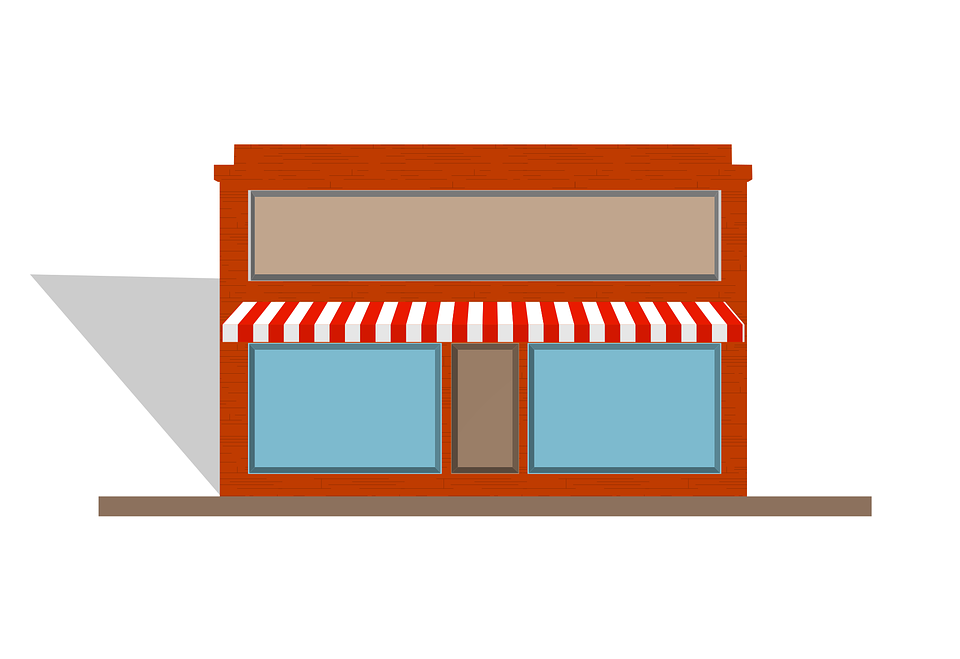 When Toby Desforges and I first published “The Shopper Marketing Revolution”, many people asked why we used the word ‘revolution’. When I first talked about “Retail Armageddon” and “Retail Apocalypse” some people wondered, why all the dramatic language? And yet as we look to the future, it appears to me that this language was totally appropriate. Retailers, and the manufacturers that supply them, are faced with an unprecedented, unpredictable environment, which will require a fundamentally different way of working. That is why Toby and I will be on the road for much of this year, visiting Asia, the US, Europe and Africa – helping companies understand what is going on in the consumer goods industry. And more importantly, explaining how to change ways of working to thrive in this dangerous new world.
When Toby Desforges and I first published “The Shopper Marketing Revolution”, many people asked why we used the word ‘revolution’. When I first talked about “Retail Armageddon” and “Retail Apocalypse” some people wondered, why all the dramatic language? And yet as we look to the future, it appears to me that this language was totally appropriate. Retailers, and the manufacturers that supply them, are faced with an unprecedented, unpredictable environment, which will require a fundamentally different way of working. That is why Toby and I will be on the road for much of this year, visiting Asia, the US, Europe and Africa – helping companies understand what is going on in the consumer goods industry. And more importantly, explaining how to change ways of working to thrive in this dangerous new world.
Retail is changing and that will change the consumer goods industry
It must clear, to even the most casual of bystanders, that the world of the consumer goods industry is changing. Retailers which have dominated their niches have disappeared or are close to extinction. Stores are closing across the US and across the globe. While online shopping still represents a relatively small share of total sales (especially for grocery) the trend is clear, and the number of people who frequently use online is large. Who would have thought that discounters would prove so popular and so adaptive? And yes, everyone could see that convenience stores were a strong model, but the continued pace of growth is nevertheless impressive.
How did we come to this? Where big retail went wrong
We all know that bricks and mortar retailers are under pressure, and I’ve written about some of the reasons for this extensively in the past. Food/grocery retailers doubly suffer as, in many parts of the world, the trend towards eating out and away from preparing at home is strong. Big box retailers suffer triply because, quite simply, they backed the wrong horse. They backed what seemed to be a logical combination of great location, great range, and fair prices as a winning formula. Actually, that wasn’t the mistake. The mistake was reading that an out of town superstore was the ultimate incarnation of this shopper wish list. Shoppers still want convenience, range, and price, but that has morphed into something else in three ways:
The consumer goods industry now needs to serve a different shopper
- The shopper definition of convenience has been mangled by a number of factors. Online has shown that shopping at a superstore isn’t as convenient as a delivery, or even ‘click and collect’. Discounters have shown that shoppers are often prepared to sacrifice large ranges for a shorter shop. And convenience stores are no longer the purveyors of a limited range of packaged goods: they offer a diverse range of products and services, making, for many, the trip to the superstore obsolete.
- The range offer of the superstore has likewise been shown to be deficient. On the one hand, online retailers, especially specialists, can offer ranges and choice and quality of curation that would be hard for a generalist retailer to match. On the other discounters and convenience stores are demonstrating that not all shoppers want a great range of everything all the time. As shopping baskets fragment, it is clear that a shopper is prepared to sacrifice range in some categories, but perhaps not others.
- Big retail’s view on ‘great price’ was built around a brick and mortar paradigm, and a big retail brick and mortar paradigm at that. Discounters and online players have ably managed to strip cost out of the model by taking away elements that some shoppers don’t value, or don’t value enough. Even convenience stores in many parts of the world are now matching hypermarkets in pricing.
What next for the consumer goods industry?
So – have we reached a new normal? Are we going to see these channels living in harmony for the forseeable future? Hardly! in the words of Bachman-Turner Overdrive – You ain’t seen nothing yet!
Problems are brewing in the retail world. All of these changes are putting massive pressure on the big retail model. The problem is that online shopping (or shopping in any different channel) doesn’t necessarily drive growth. I don’t clean my teeth more frequently because I bought my toothpaste online, for example. Sure, if I go to a cheese specialist I might spend more on cheese, but I may well counter that by picking up another category (that I care less about) at a low price in a discounter. Overall, in many cases new channels cannibalize. Annual growth rates for big retailers are declining.
A recent report from Planet Retail shows that, across Europe, retail floor space has grown, yet sales growth isn’t keeping pace. Productivity – the amount of sales per square meter or square foot – has crashed. This has pressured profitability for retailers.
Small changes in shopping behavior have a disproportionate impact on the consumer goods industry
The retail financial model is remarkably fragile for such a huge business. Margins are very thin – according to Deloittes, the average profit margin of the top 250 retailers is only 3.2%. How much sales do you need to lose for that margin to shrink? By our estimates, a drop of only 5% in sales could drop profits by up to 19%. And that leads to the conclusion that some stores will have to close and some stores will fail. For manufacturers, that requires a more dynamic process for managing retailers and retail investment. Negotiating with a big customer who is growing is one thing: negotiating with a big customer who is in crisis is quite another, for example.
Retailers and manufacturers need to change now!
Investments from both retailers and manufacturers will need closer and more dynamic management than ever before: it is simply not possible to continue investing with everyone, or to continue investing as before.
The Shopper Marketing Revolution – Much more than ‘just’ shopper marketing!
And what is required to fuel those decisions? Marketing, and shopper marketing, more specifically. And by ‘shopper marketing’, I don’t mean clever displays at retail, nor working with Target to come up with an exclusive activity. Shopper Marketing – More than just a function, represents a massive shift in the way the consumer goods operates. When I say shopper marketing I mean an absolute focus on which shopper segments are critical to your brands survival and growth. When I say shopper marketing I mean really understanding the varying missions of those shoppers and understanding where and how to intercept those shoppers, on which missions, to best achieve your company’s goals. By shopper marketing I mean making decisions, based on that shopper insight, about which stores, and which activities will be invested in, and which will not. By shopper marketing I mean the application of technology not because you can, or because shoppers ask for it, but because it will help your company achieve its strategic goals. By shopper marketing, I mean fully evaluating the short and long-term implications and return on those investments – not just ‘did we sell more?’, but did we impact shopper and consumer behavior in the longer term in a way which supports my brand, my business, and its strategic goals?
The Consumer Goods Industry needs new skills and mindsets in this new world
The consumer goods industry is entering a very different world, and retailers and manufacturers will need teams with a different mindset and skillset to survive and thrive in this environment. In the assessments that we have made with various companies around the world, most organizations have significant shortfalls against the key skills that are required. Many processes simply do not support teams to behave in the way that this new retail paradigm requires. Data sets are incomplete and where they exist, they either aren’t accessible to the people who need them, or the people don’t have the skills, process or political power to turn that data into insight and into meaningful action.
Retailers and Manufacturers – the first step into the future of the consumer goods industry
Sounds like there is lots to do, right? That’s why we called it a “Shopper Marketing Revolution” – it’s a revolution not in shopper marketing, but in the entire way that brands and retailers meet consumers and shoppers. It’s a revolution which will change the way the consumer goods industry functions.
Feeling worried? Feeling excited? That’s OK. There’s a lot to do. And now is the time to start. Toby and I will be traveling around the world over the coming months (we’ll be in Asia, The US, and Europe between now and July, and a few more places in the second half of the year). If you’d like us to run a workshop exclusively with your team to begin the process of preparing for the future, please contact me. And don’t just bring your shopper and category team: bring marketers and sales people too. They are all part of the solution.
We’re also running a number of public workshops – so if you want to check those out, you can find out the dates and venues here. And if your town or city or country isn’t on the list, just send me a note. You never know, we might be able to come to you!


